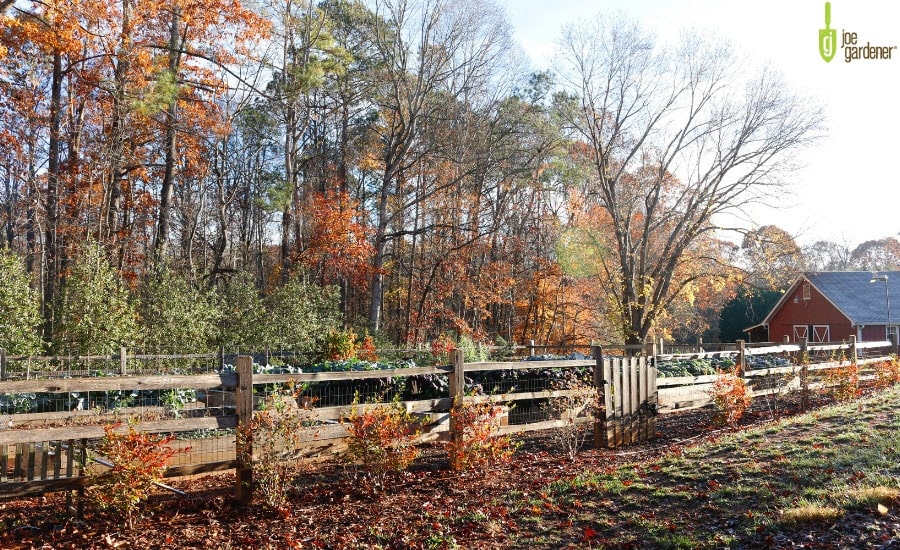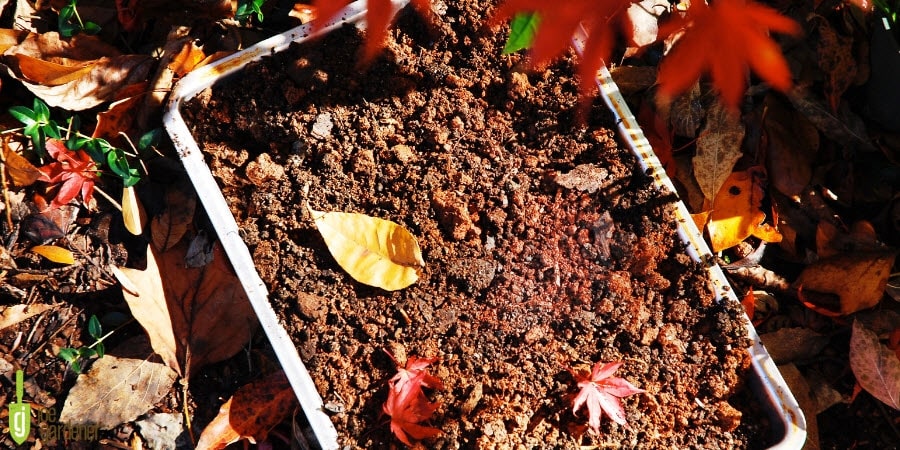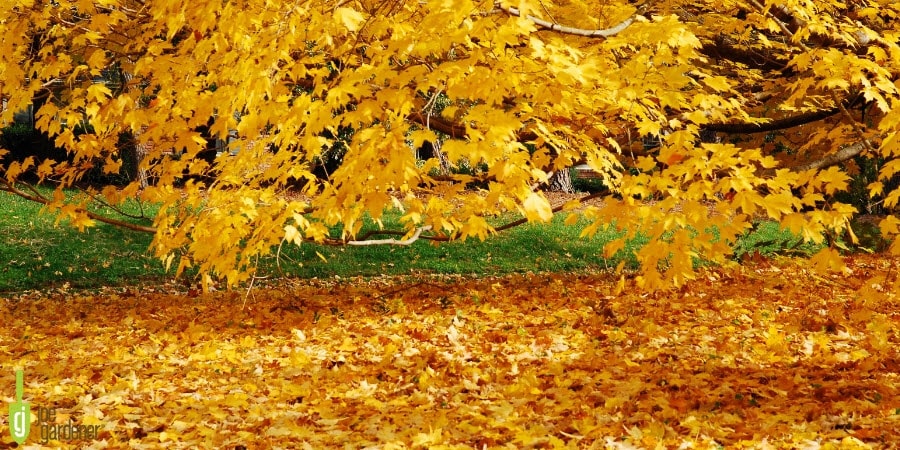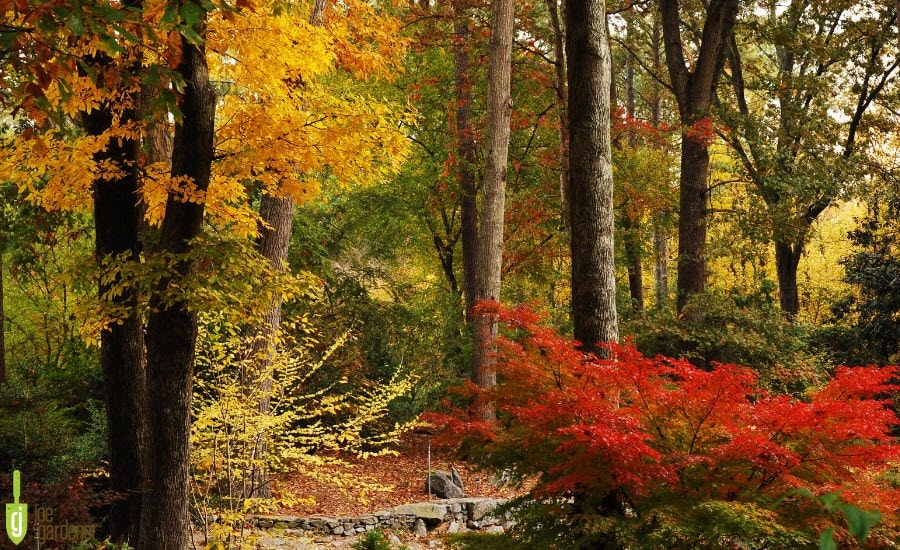Using Fall Leaves in the Garden
- Gardening Expert and Host of Growing a Greener World®October 27, 2018
Fall has arrived, and it’s a favorite time of year for many. It certainly is for me. The cooler temperatures, football games, the approach of Thanksgiving - these are just a few of the reasons fall is what I consider the best season. Yet, it’s the falling leaves that I’m most thankful for right about now. I love the vibrant colors as leaves change on the tree, but it’s when they pile up on the ground that I really feel the fall thrill.

Above: Joe Lampl's GardenFarm™ in Fall
That might sound strange to you, but let me explain the method behind my fall madness. Sure - raking that blanket of leaves is a chore. There’s no doubt about that. Yet, the task becomes almost a pleasure when you focus on all that those leaves can do to benefit your landscape.
Leaves really are a gift to gardeners. Consider this: 50-80% of the nutrients trees have extracted from the earth are held in the leaves which, ultimately, fall to the ground. Why let all those nutrients be hauled away to the landfill in plastic bags as waste? Instead, put them right back to work into your landscape.
Every year, I gather up the leaves that blanket my property at the GardenFarm™. I put them to use as mulch. As soon as I’ve spread them over my soil, the magic begins to happen.
Earthworms, beneficial fungi, and bacteria of the soil food web love to feast on leaf mulch. These organisms come up to the surface to devour the mulch, then burrow back down deeper into the soil and deposit that matter as castings or through their own decomposition. This process recycles and distributes those rich leaf nutrients throughout the soil in a form which can be utilized by plant roots more efficiently and effectively than any synthetic fertilizer.

Leaf mulch nourishes all the life that grows in and from the soil, but just like all natural mulch, it also provides so many additional benefits:
-- It insulates the soil and plant roots to retain warmth as temperatures drop (or keep soil cool during hot spells).
-- It retains moisture near the soil surface to cut down on watering.
-- It prevents soil erosion during heavy rain.
-- It blocks sunlight from reaching the soil, which keeps weed seeds from germinating.
-- It provides the organic matter that improves soil texture and drainage.
Any soil can be improved with organic matter like leaves. It’s never an overnight transformation, but a few years of using leaves as mulch will turn the top several inches of even the densest clay into rich, loamy soil that’s a pleasure to garden in.
As if all of these benefits weren’t reason enough to put those leaves to work in our gardens, repurposing this material could collectively reduce landfill waste by 10% or more.

Don’t worry that leaves from some trees, like oaks, might negatively impact your soil pH. That just isn’t a concern. However, leaves from black walnut trees contain a compound which can be toxic to other plants, so I caution against using those.
Converting leaves into rich, loamy organic matter that adds life to any garden soil is easy once you have them gathered up. You could spread the whole leaves in your landscape beds, but to reap the rewards more quickly, here are the steps I take:
--Gather all the leaves you’ve collected onto an area where you can mow over them with your mulching mower. Don’t layer so thickly that it will bog your mower down. A layer of a few inches works great for me. It’s easiest if your mower will mulch the leaves with your bagger attached to avoid the need for you to rake them back up.
Try to avoid doing this project when leaves are wet - dry leaves make this process a lot more efficient. Mow over the layer once or twice to shred it well, because smaller pieces bind together better in the beds for a more uniform mulch layer. Personally, I enjoy working with shredded leaves a lot more, because they are much easier to spread by hand - especially when working around smaller plants. I also love that the small pieces will break down and improve the soil more quickly.
If you don’t have a space where you can shred leaves with a mower, don’t worry. You can achieve the same results by filling a large garbage bin about two thirds full with leaves, and then, lowering a power string trimmer into the bin. When you turn the trimmer on, it will work like a blender to chop the leaves into small pieces.
-- Once the leaves have been shredded; you can rake or blow them directly into your adjacent beds. (It’s fine to leave a thin layer of leaves on the lawn, but avoid leaving any amount that covers much of your grass.) If you’ve bagged them, they are easy to carry and distribute on exposed soil anywhere in your garden. Apply a layer of leaf mulch about 2” deep to cover the soil surface.
-- These first two steps are all you need to benefit from the leaf mulch, but you could opt to apply another layer of mulch on top of the leaves. That might sound excessive. However, it’s a good idea to take this extra step to ensure the leaves are weighed down sufficiently to reduce the chance of being blown away. If you prefer the look of a more consistent mulch material, like pine straw or wood chips, this is the ideal combination to get the nutrient benefit of leaves along with the aesthetic you’re after. Either way, the extra mulch (assuming it’s not too thick - no more than 4″ total) will provide another layer of organic matter that will eventually break down, adding even more valuable organic matter to your soil.
I put fall leaves to work in my compost too. Every fall, I collect an enormous quantity of leaves from willing neighbors, and I’ve often reached out to local landscape crews for even more. So once I’ve mulched all my landscape and garden beds, I add the rest of the shredded leaves to my compost bins.
Leaves are a fantastic source of carbon - a key element in making compost. By shredding them up into small pieces, the decomposition process takes place much more quickly, which helps to raise the temperature in my compost. Within a few weeks in my active compost pile, active compost pile those shredded leaves are unrecognizable. They have melded with all of the other materials I’ve added to my compost and have transformed into a dark, rich, earthy, soil-like consistency.

For me, gardening is truly about working in concert with nature, and putting leaves to work as mulch and in compost is a prime example. It’s continuing the cycle of life in the garden. I’m replenishing the soil - making it better and better every year. My plants are healthier, my little ecosystem is happier, and I am one contented gardener. I hope you’ll give it a try in your own little corner of the world this year.

